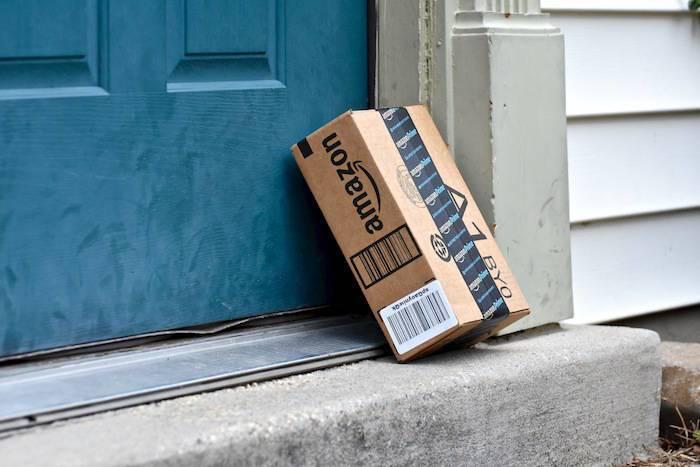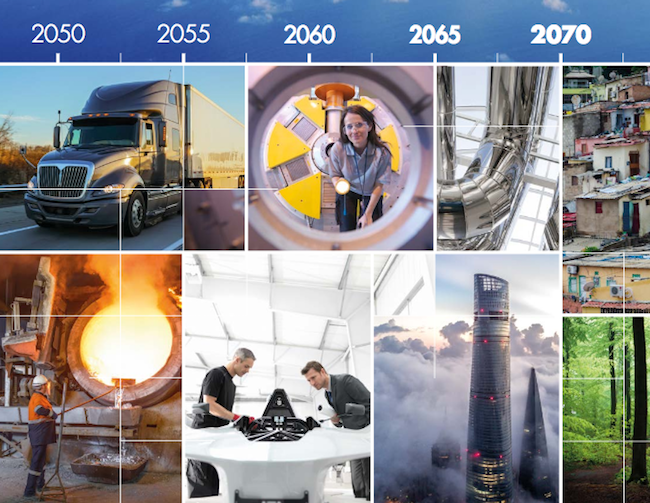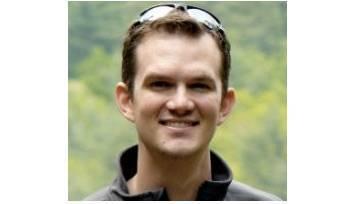DOE's Rick Perry is White House's Unlikely Advocate for Clean Energy Incubator


President Trump made news again this year when his office announced that programs that have long supported social needs and business innovation were to be zeroed-out for the 2019 budget.
Programs like the US Agency for International Development (USAID), which provides foreign aid for critically underserved community development, and the federal Low Income Home Energy Assistance, an important conduit of services for low-income families were on the White House’s chopping block.
And while Congress appears to have largely ignored those requests and left programs like USAID and LIHEA intact, one federal grant program is gaining an unlikely defender to its cause.
The program is the Energy Department’s Advanced Research Projects Agency-Energy, or ARPA-E for short, which has wide bipartisan support for one reason: It produces results. It’s the federal government’s equivalent of a startup incubator, serving not only as a funding resource for innovative energy projects, but as an inspiration for startups and other organizations who think they can answer a crucial industry need with disruptive technology. Through its ARPA-E summits and other programs, it brings together potential innovators and encourages technology growth.
ARPA-E’s biggest and unexpected advocate is Energy Department Head Rick Perry, who had once said he would abolish the DOE if he were elected president, lumping it in with commerce and education as extraneous departments.
Today, Perry’s tune is different. After a year on the job, the former governor has come out publicly to admit that he now sees the value in a program that encourages public-private partnerships – including in renewable energy. He’s also vowed to support those initiatives.
And he’s gaining supporters. Congressional Democrats and Republicans, other members of the Energy Department as well as recipients of ARPA-E funding have pointed out that many of the projects that depend on DOE funding are helping to change the course of U.S. technology. A few of the projects include:
- Alveo Energy’s Prussian Blue Batteries, which provides a cheaper source and method for creating batteries;
- Applied Materials’ low-cost silicon wafers for solar energy. The project actually dovetails with the president’s latest push to bring solar energy manufacturing home to the U.S.;
- Lawrence Berkeley National Laboratory’s project to turn bacteria into biofuel. University of California’s Nobel Prize winning laboratory has been a repeat recipient of ARPA-E grants over the years, competing in cutting-edge research that would put the U.S. ahead globally when it comes to sustainable fuel production.
But ARPA-E also incentivizes private support of innovation by paving a way for businesses to commit to “follow-up” funding. Projects in 2014 for example, garnered $625 million in private follow-on funding, ensuring the continuation of research that were kickstarted with DOE’s $95 million investment. That 6-to-1 funding is part of the reason that Congress quietly overlooks efforts to stop ARPA-E.
Even though Perry’s efforts to protect ARPA-E may win Trump’s disfavor, it’s helping to highlight an important fact about cutting-edge technology: innovation is built as much through partnership as healthy competition. Many countries, including Israel, Canada and France, are already proving that point with initiatives that are increasing upskilling as well as development funding.
ARPA-E is one of the U.S.’ best avenues to ensuring American businesses can truly compete in the race for tomorrow’s technological edge. Hopefully Perry's new-found advocacy will help increase its resilience and support ahead of next year's budget session, when it could very well find itself back on the list for funding cuts.
Flickr image: Claire BenjaminExecutive Perspective: Business’s Greatest Untapped Resource: Women


By Fiona Dawson
Women occupy just 15 percent of board seats worldwide. In the US, women account for just five percent of all CEOs among S&P 500 companies. In the UK the situation is worse: in 2016 there were more male CEOs named David (eight) than women CEOs (six) in the FTSE 100.
These figures make for uncomfortable reading for men and women alike, but we have two choices in the face of this harsh reality – we can either feel discouraged by the lack of progress and downbeat about the prospects for women in the workplace. Or, we can allow this data to fuel women’s rise to the top and help drive the change that is needed at the higher echelons of business.
We need to fill the pipeline of female leaders fast. The question is – how?
A new report ‘Better Leadership, Better World: Women Leading for the Global Goals’, from WomenRising2030 – a new initiative launched by the Business and Sustainable Development Commission – shows that women’s leadership in business is critical to driving significant economic opportunities and driving better performance.
Even more, the report argues that women’s leadership is key to delivering broader, long-term benefits for society and the environment, driving achievements of the UN Sustainable Development Goals – a set of 17 objectives to end hunger, poverty, and inequality, and effectively tackle climate change and resource degradation by 2030.
Without gender equality, male-dominated companies risk losing out on significant opportunities linked to sustainability.
Gender equality in the workplace can help unlock more than US$12 trillion in new market value that could be available to companies that create sustainable business models.
There is evidence that businesses with more women in high-level management positions, particularly on directorial boards, are better able to shift their business’s focus from maximising short-term profit to achieving longer-term growth goals. Research also shows that companies with more women on their boards are more likely to invest in renewable power generation, low-carbon products and energy efficiency. They are thinking of the long-term success of the business and enabling the companies they run to be around for generations to come.
But the climb to the top does not happen overnight. If we want to see more women at the top, we need to first fix the ‘leaky’ pipeline.
Data from the UK shows that 73% of entry-level roles are occupied by women, yet this only translates into 34% of female managers, directors and senior officials. Why is business losing talented women?
I firmly believe that women represent the most powerful untapped resource we have. Despite improvements in regulations and legislation, the proportion of women making it to senior roles is still low. To fix the leak in our pipeline, we need stronger interventions at a business enterprise level to change workplaces and organisational cultures, and these changes must be led from the top.
Mars partnered with the UK Women’s Business Council last year to create ‘The Pipeline Effect’, a toolkit for enabling gender parity beyond middle management. We identified three key obstacles to women’s progress:
- A lack of role models
- The need for more dynamic and flexible working
- A lack of good line management
As managers, we need to ensure we are having authentic conversations with women about what’s important to them, both in their career and in their home life. Only then can we start to unlock individual routes to success and work out tailored career paths and opportunities. Good managers make it a personal responsibility to have authentic conversations.
In 1999, I was asked to move to the Netherlands as Sales and Marketing Director. I felt very torn. I had been married a few years and was thinking of starting a family but equally I was excited by the new role, and the opportunity for us to have an adventure abroad. I couldn’t see how I could match furthering my career with hopefully having children.
Thankfully it was a chance conversation with the European President of our business which allowed me to express my fears. His words of reassurance gave me the confidence to take the job, and allowed me to realise how potentially self-limiting my beliefs had been.
I’ve learned first-hand that if we have a boss or an environment that’s negative, where we can’t have those conversations, it will drive everyone undercover. Where the environment is positive, there’s a ripple effect.
Companies must affect positive change early on to continue to retain talented women and clear the path to leadership. Sometimes, that can start with a conversation. Creating gender-balanced leadership teams is not only the right thing to do; it’s the smart thing to do, particularly as we try to make our businesses more sustainable.
Fiona Dawson is Global President of Mars Food, Drinks and Multisales at Mars, Incorporated
Photo: Mars, Incorporated
This article originally published on Thomson Reuters and distributed by 3BL Media.
Pfizer Releases 2017 Annual Review


By Pfizer
Pfizer has announced the release of its 2017 Annual Review, which highlights The Power of Science to showcase how science drives every aspect of Pfizer’s business in its mission to deliver innovative medicines and vaccines to help ensure every individual lives the healthiest life.
At Pfizer, we believe there is a science to everything, from research and development, to manufacturing, to patient access and philanthropy. This year’s integrated Annual Review uses the lens of our colleagues to illustrate how The Power of Science drives our strategies for addressing the needs of patients.
Highlights of Pfizer’s 2017 achievements include:
- Received approval of 10 products and advanced 43 pipeline assets.
- The Pfizer Foundation1 donated $2.75 million in cash grants globally to disaster relief and response. Additionally, 2,200 generators were provided to Pfizer colleagues in Puerto Rico after Hurricane Maria.
- Launched Healthy Communities, a collaboration with the international non-profit organization Population Services International, to help improve the diagnosis and treatment of hypertension in Myanmar and Vietnam.
- Expanded access to essential cancer treatments in sub-Saharan Africa through a partnership with the American Cancer Society and the Clinton Health Access Initiative. Through this agreement, Pfizer helped broaden access to 11 essential cancer treatments in Ethiopia, Nigeria, Kenya, Uganda, Rwanda and Tanzania.
- Helped to provide more than 250,000 patients receive 1.8 million Pfizer prescriptions for free or at a savings through Pfizer RxPathways.®2
- Collaborated with the Bill & Melinda Gates Foundation and the Children’s Investment Fund Foundation to help broaden access to Pfizer's long-acting injectable contraceptive for women most in need in some of the world’s poorest countries. By the end of 2017, more than 16 million doses were shipped to 23 countries in the developing world, potentially reaching more than 4 million women – up from an estimated 1.5 million women at the end of 2016.
- Exceeded 700 million donated doses of an antibiotic used to treat trachoma since the donation program started in 1998.
- Worked to reduce carbon emissions, increase water efficiency and minimize waste.
Learn more about how The Power of Science is helping all individuals everywhere live healthier lives: www.pfizer.com/annual.
1. The Pfizer Foundation is a charitable organization established by Pfizer Inc. It is a separate legal entity from Pfizer Inc. with distinct legal restrictions.
2. Data on file. Pfizer Inc., New York, NY.
Photo: Pfizer.
Unpacking Corporate Responsibility at Amazon


Thud. Another Amazon Prime package drops on the doorstep, a sound almost as common as the mailman’s steps themselves.
For tens of millions of consumers, Prime is a gateway to everything from baby wipes to dinner to a quick fix for a misplaced wedding ring. Most shoppers use or have used Amazon, a fact that highlights the retailer’s power as well as its responsibility to be a good corporate citizen. At a time when trust in big business is flagging, the pioneering online retailer has an outsize presence, and any move it makes toward improving corporate responsibility promises to be a seismic shift that would influence all the industries impacted by Amazon’s meteoric growth – from food and electronics to web hosting and media. So what is the state of CR at Amazon?
A CR Magazine review of its practices and strategy finds that Amazon has made significant progress in two major areas: packaging improvements and renewable energy commitments. These are both material issues for the company, a big deal from an environmental perspective, and deserve to be lauded. Amazon’s “frustration-free” packaging is a great example of a sustainability initiative that comes from following the customer’s lead. Amazon’s description of this packaging is straightforward:
“Packaging that is made of 100% recyclable materials, easy to open, and designed to ship products in their original packaging, which eliminates the need for an additional shipping box.”
This change sounds modest, but it actually involves many layers of supply chain engagement, including working with manufacturers and engineers. Since products sold on Amazon never see a retail store, packaging need not include many of the security measures or display elements that keep a product pristine and front-facing on a brick-and-mortar store shelf. By eliminating these elements, Amazon saves materials, reduces costs and pleases customers.
Amazon sustainability lead Kara Hartnett Hurst recently claimed that packaging accounted for $1.6 – $3.3 trillion worldwide. That’s a lot of money for something you immediately throw in the trash. As of December 2017, Amazon’s sustainable packaging innovations have eliminated 215,000 tons of packaging material and avoided 360 million shipping boxes. While boxes that cover overboxes sound like low-hanging fruit, it is clear that bringing this initiative to fruition took considerable effort, given Amazon’s size and scope. With ongoing advances in materials and processing, it’s a good bet that the company will continue innovating in this area to cut costs (saving time and materials) as well as waste.
Amazon has also made strides in renewable energy, a material issue given the company’s expansive Amazon Web Services offering. Data centers are big business and big energy. The company explains, “Amazon Web Services has a long-term commitment to achieve 100% renewable energy usage for our global infrastructure footprint and is making good headway.” The company says it is approximately 50% renewable powered, as of the end of 2017. These are significant achievements, although somewhat amorphous. Amazon does not disclose its total energy footprint, the definition of “infrastructure” in this case, or its plan for getting to the other half of that renewable energy footprint. And the retailer releases only a small amount of data on energy procurement and renewables. Presumably, this information is available in-house and used by the company to plan for that other 50%, but the lack of more detailed information to the public means that its goals and progress claims are not as impactful as they could be. There are many stakeholders who would love to know what “good headway” adds up to in actual numbers.
This vagueness gets to the next step in CR that Amazon has yet to take: the one toward more transparency. But here’s where Amazon’s position on disclosure gets interesting: it’s company policy to closely hold data on all its activities including sustainability. Those expecting more insights into Amazon’s corporate responsibility goals when Hurst, an experienced sustainability practitioner, took the helm were cautioned that the company marched to its own drum in the realm of reporting.
At the BSR conference last year, Hurst spoke from the stage about this pressure to report that the sustainability community assumes as a norm:
Having been in [the sustainability field] a long time now, and been a part of it for a long time myself, there are things people tell you: you have to do this and you have to do that and if you don’t report here you’re not credible and if you don’t put it out in this format, you’re not credible.Well, I challenge all of that. I think that all of us … should think about how those mechanisms that served us well in the past … may not be the ones we need moving forward. If they’re not adding a huge amount of value to whoever you’re focused on—and for us that’s our customers—then don’t do it. Don’t engage.
Some thought this approach might loosen up when Amazon amassed a veritable sustainability army, starting with the hiring of Hurst, who came from The Sustainability Consortium, co-founded by Amazon competitor Walmart. When she was hired, in August of 2014, GreenBiz’s Joel Makower noted that reticence about data was standard practice for Amazon:
The company, in typical closed-mouth fashion, has not announced Hurst’s hiring and declined to comment on it. Hurst, too, was mum, even declining to reveal her title, where she’ll be reporting, or what her mandate will be at the retailer.
However, he alluded to Hurst’s strong reputation in the field as a good sign: “I’ve known Hurst for years — she’s no shrinking violet — and am guessing that (Amazon CEO Jeff) Bezos or others said the right things to lure her to Seattle from New York. It will be interesting to see if it was worth the journey.”
Marc Gunther, writing in Guardian Sustainable Business U.S. in 2016, called her group a sustainability “dream team.” As of this writing, LinkedIn shows 39 current Amazon employees with sustainability in their title. A team that robust is unusual, even for a large corporation like Amazon, and indicates an equally robust program.
Why is disclosure so important? What difference does a paucity of data make if we believe—and we have no reason not to—that Amazon is making a significant commitment to CR/sustainability?
There is this thought: corporate sustainability performance is, by design, a moving target. That’s because we all understand that there’s a lot of work to do, and moving organizations takes time. Moving very large companies takes even more time. Goals may undergo regular revision as improvements are put into work throughout the many departments and networks that comprise a big company. So we judge organizations not only by their performance, but by the targets they set, how rigorous and “material” they are to the company, how effectively the company works to meet the targets—and by the level of communications that the company exercises while the hard work is taking place. Big companies of any kind have much more knowledge about the internal impacts and opportunities of sustainability and corporate responsibility than any of their stakeholders outside. And by providing that information about what’s important, they help stakeholders understand what a company is doing.
Also, sharing best practices is a major tool in helping more companies make more progress, faster. Here’s where more information from Amazon could be vitally important to the entire CR community. The company’s amazing efficiency in its distribution performance, its ceaseless push for innovation, and its unparalleled customer service position it perfectly to be a leader in CR. It could easily claim that title when it takes that next step and increases its reporting so that CR stakeholders can properly give credit for practices and achievements where credit is due.We can measure impacts and progress, we can compare peers, and we can add numbers and percentages to the overall sum of efforts by large corporations to get a sense of global progress.
Indeed, the act of reporting can improve tracking, methodology, process and challenge the people inside a company to actually do bigger and better and make those sustainability wins happen.
“Once it’s out there you have people who react and comment, and just going through that series of steps puts so much more emphasis on both the quality and the results that it’s not even arguable that the process of reporting leads to improvement and performance,” explains Tim Mohin, chief executive of the Global Reporting Initiative, who has been critical of large technology companies that don’t fully embrace sustainability reporting.
“Just saying we’re doing it, fine you’re probably doing something, But actually proving it and being willing to put your company’s brand name on it and incur the legal risk of making a statement in the public — that changes everything,” he added.
Participation in global sustainability programs like GRI’s reporting standards or the RE100 is not a requirement for a company to be a strong sustainability actor, but in the complex world of corporate sustainability, those partnerships and collaboration sure help.
While 82 percent of the Fortune 500 produced a CSR or sustainability report in 2016, according to the Governance and Accountability Institute, we recognize Amazon and its founder are wired differently than the average company. Unlike billionaire tech tycoons Bill Gates,Mark Zuckerberg, Pierre Omidyar and Mike Bloomberg – all of whom pledged to give away the majority of their fortunes — Amazon chief Bezos has made no such promise. But he did buy the Washington Post and is being applauded for investing in journalism in the nation’s capital.
Transparency is the new black. With the company about to open a new headquarters and the resultant community impacts that second “Amazon City” will create, it’s a perfect time for the online supercenter to take the next step toward telling its CR story.
This article was originally published in CR Magazine
Sources:
https://www.greenbiz.com/blog/2014/08/15/kara-hurst-named-amazons-first-sustainability-executive
https://www.greenbiz.com/video/amazon-sustainability-and-packaging
Royal Dutch Shell Throws In The Climate Change Towel, Sees Low-Oil Future By 2070


It had to happen sooner or later. A legacy oil and gas company -- in this case, Royal Dutch Shell -- finally took a clear-eyed look at climate change and concluded that the age of oil is winding down. Earlier this week the company announced its "Sky" carbon emission scenario for 2070, in which electric vehicles, energy storage and other new technologies combine to cut the global fossil fuel cord.
That doesn't mean oil and gas are completely out of the picture. However, Sky is a giant step forward in terms of coming to grips with reality, and shaping a new role in the transformation of the global economy.
Action on climate change: technically possible, but challenging
Shell's new Sky scenario is outlined on the company website, and there's a lot to chew on even just in the scenario's landing page.First off, Shell is careful to emphasize that "scenario" is not the same thing as "policy proposal."
Nevertheless, the scenario reads like a manifesto for action on climate change, and a prescription for meeting the Paris climate change agreement goal of less than 2 degrees Celsius above pre-industrial levels:
The Sky scenario illustrates a technically possible, but challenging pathway for society to achieve the goals of the Paris Agreement.
Sky is the latest in a series of Shell scenarios, and the company declares that it is "our most optimistic scenario in terms of climate outcomes."
That circles right around back to technology. The rising tide of citizen and corporate action on climate change is directly linked to the fact that alternative energy technology is beginning to compete, and in some markets beat, conventional fossil fuels. In other words, today there is a choice, and solutions are at hand.
In Sky, Shell frames out the current state of affairs:
A new energy system is emerging. The Paris Agreement has sent a signal around the world: climate change is a serious issue that governments are determined to address.
Do you see what they just did there? Although Shell insists that Sky is not a policy prescription, the scenario loops government action into its DNA.
Here's the general idea behind Sky:
The Sky scenario...reveals the potential for an energy system to emerge that brings modern energy to all in the world, without delivering a climate legacy that society cannot readily adapt to.
Shell emphasizes that the Sky scenario is a realistic one, but the company cautions that successful action on climate change is "not guaranteed." In other words, policy comes into play:
The Sky scenario relies on a complex combination of mutually reinforcing actions by society, markets and governments. It recognises that the necessary changes will unfold at different paces in different places, and must ultimately transform all sectors of economic activity. The changes are economy-wide, sector-specific, and amount to re-wiring the global economy in just 50 years.
And, Sky is quite clear on the level of aggressiveness required. Here's a snippet from the full scenario:
In Sky, governments around the world implement legislative frameworks to drive efficiency and rapidly reduce CO2 emissions, both through forcing out older energy technologies and through promoting competition to deploy new technologies as they reach cost effectiveness...Legislation in many jurisdictions forces grids towards 100% renewable energy by the 2040s. Appliances, commercial and residential buildings, and personal transport are all targeted with aggressive efficiency or emission standards.
The landing page wraps up with the cautionary note on the difference between scenarios and policy proposals:
Scenarios are not policy proposals – they do not argue for what should be done, nor forecasts – what will be done. They are not predictions, nor business plans, and investors should not rely on them to make decisions.
Considering that the US is now the only nation on Earth not participating in the Paris climate change agreement, Sky could also read as a stinging indictment of the Trump administration's energy policy, and a message that other US energy policy stakeholders -- namely corporations, cities and states -- that they need to step up their game.
Action on climate change: more to Sky than meets the eye
If you take a look at the full Sky scenario, you can see that Shell's vision for 2070 is a web of transformations, not simply a cut in the role of fossil fuels. A dramatic increase in renewable energy is a key factor, but not the only one:
1. A change in consumer mindset means that people preferentially choose low-carbon, high-efficiency options to meet their energy service needs.
2. A step-change in the efficiency of energy use leads to gains above historical trends.
3. Carbon-pricing mechanisms are adopted by governments globally over the 2020s, leading to a meaningful cost of CO embedded within consumer goods and services.
4. The rate of electrification of final energy more than triples, with global electricity generation reaching a level nearly five times today’s level.
5. New energy sources grow up to fifty-fold, with primary energy from renewables eclipsing fossil fuels in the 2050s.
6. Some 10,000 large carbon capture and storage facilities are built, compared to fewer than 50 in operation in 2020.
7. Net-zero deforestation is achieved. In addition, an area the size of Brazil being reforested offers the possibility of limiting warming to 1.5°C, the ultimate ambition of the Paris Agreement.
It's also important to note that Shell's vision for 2070 still has oil maintaining a lead position over both coal and natural gas.
According to Shell's breakdown, coal accounts for 27% currently, oil has 32% and natural gas comes in at 23%.
In 2070, the Sky scenario envisions coal at just 6%, natural gas at 6%, and oil at 10%.
What about hydrogen?
In another interesting twist, Sky foresees a rapid increase in the use of hydrogen, driving down the demand for liquefied petroleum gas products like propane and butane.
The hydrogen picture is complicated by the fact that currently, most hydrogen is produced from fossil natural gas.
However, Sky underscores the role of renewable hydrogen, and the potential for rapid growth is there because renewable hydrogen can piggyback on existing natural gas infrastructure:
Onshore and offshore hydrogen electrolysis systems also begin to emerge around the world inSky. Initially, they make use of the growing off-peak surplus of electricity from renewable sources, but later become fully integrated base-load systems. As a result,after 2040, hydrogen emerges as a material energy carrier, steadily growing to account for10% of global final energy consumption by the end of century.
The emphasis on hydrogen infrastructure is especially interesting from a green branding perspective. It provides Shell with a shareholder rationale for continuing to develop its oil and gas assets, since those will eventually be repurposed:
As oil and gas use falls over time in Sky, redundant facilities are repurposed for hydrogen gas storage and transport.
In other words, don't expect Shell to drop everything and pivot to renewables on a dime.
Do expect more actions like the company's recent acquisition of US solar farm developer Silicon Ranch.
By bidding on renewable energy projects, Shell can also be credited indirectly with helping to reduce the cost of renewables. Even if it doesn't get the winning bid, the company's growing interest in renewable energy helps to heat up the competition and drive costs down.
Image (screenshot): via Royal Dutch Shell.
How AI Is Helping Control Malaria


By Oliver Bent
Bed nets, insecticides and repellents are all effective intervention strategies to control the spread of malaria, but with a continuously dwindling budget, how can public officials and policymakers know what to use – where and when – to be most effective?
Malaria is caused by parasites transmitted to people through the bites of infected mosquitoes. While it’s endemic in sub-Saharan Africa (SSA), nearly half of the world’s population is at risk.
According to the World Health Organization, in 2015, there were roughly 212 million malaria cases and an estimated 429,000 malaria deaths.
Malaria control measures have led to a 29 percent reduction in mortality rates since 2010.
But I’d personally like to see this statistic eradicated, and the tools of machine learning (ML) – and more recently artificial intelligence (AI) – may provide some potential answers.
Incorporating machine intelligence
Recently at the Innovative Applications for Artificial Intelligence (AAAI-IAAI) conference located in New Orleans, I was privileged to present our recent work Novel Exploration Techniques (NETs) for Malaria Policy Interventions.
Conducted in collaboration between IBM Research – Africa and the University of Oxford – we have begun to use machine intelligence to augment the decision-making abilities of officials and explore more effective malaria policy interventions.
Our work proposes the use of different AI algorithms or agents to determine the most effective intervention strategies for specific locations.
This was made possible by publicly available research and models (OpenMalaria). The OpenMalaria simulation model can be used by computational agents to explore what-if scenarios and learn new, more effective policies for the control of the disease.
Our approach applies multiple AI agents to determine more effective malaria policies based on long-lasting, insecticide-treated nets and performing indoor residual spraying programs. We ran these computational experiments to simulate a region in Western Kenya during a five-year intervention period in the future.
Using a combination of advanced computer infrastructure and AI, we can demonstrate that it’s possible to determine higher performing future intervention strategies for a particular region.
This is important because as with anything, people find it difficult to deal with vast strategy spaces, and sometimes our decisions can be prejudiced from past experience, lack of time or influence.
We’ve developed the AI agents as “expert advisers” to help support policymakers looking for more cost-effective intervention strategies.
Combating cost
The cost effectiveness of malaria intervention strategies is significant: Given finite, distributed and uncertain investment in the elimination of malaria, AI may be able to level the playing field and coordinate how we can do the most good for the greatest number of people.
For example, a 2017 study reported that insecticide-treated nets are consistently the most cost-effective intervention across a range of transmission locations.
Yet, our results suggest that for simulated scenarios in Western Kenya, it may be more cost effective to perform indoor residual spraying programs for a small proportion of households, instead of continuing to scale the deployment of insecticide-treated nets.
We have treated the particular challenge of determining the most cost-effective malaria interventions as a stochastic multi-armed bandit problem.
Since we assume any strategy is to be implemented five years into the future, this reduces the problem to identifying which single policy as a combination of interventions is most cost effective.
While exploring novel, high-performing policies, we wish to reduce uncertainty given the stochasticity in the results supporting decisions.
Therefore, so-called Bandit algorithms, which take uncertainty into account, were a natural fit – as well as giving comparison with other techniques including Genetic Algorithms and Policy-Gradients from Reinforcement Learning.
Scratching the surface
While we have only just started to scratch the surface of artificial intelligence, we’re continuing to research how we can achieve more nuanced decisions through training machines to understand the impacts of seasonality; explore more intervention options; target interventions to specific populations; deploy across locations; and account for dynamic changes in the environment as we observe new real-world data.
I believe this would bring us closer to the objective of malaria eradication with AI.
Luckily though, we don’t believe we have to do this alone or in isolation. We have been working to bring this work and the tools we’ve developed to the cloud, leveraging even greater computing resources and geographical independence.
Hopefully, this will inspire other researchers to engage with the problem, too.
Oliver Bent is an IBM research scientist
This article originally appeared on the IBM THINK blog and was distributed by 3BL Media.
PPAs for Renewables Continue to Soar – For Good Reason


By Tom Idle
When the world’s biggest food business Nestlé signed a 15-year power purchase agreement (PPA) with a company called EDP Renewables last month, it was seen as a huge step forward for Nestlé’s ambition to buy 100% of its electricity from renewable sources.
EDP will supply 50MW of clean energy to run five of the company’s facilities across Pennsylvania thanks to a huge wind farm situated close enough to the manufacturing plants and distribution centers of Nestlé Purina PetCare, Nestlé USA and Nestlé Waters North America.
According to the company’s North American chief supply chain officer Kevin Petrie, the partnership “propels us forward in our ambition to create zero environmental impact by 2030, and is another example of our business transformation journey”. It also illustrates Nestlé’s strategy for creating shared value, boosting the economic bottom line while helping to create a healthier planet.
Similarly, the US home improvement store Home Depot is creating mini solar farms by using its rooftops at 50 of its stores. It’s a move that cuts grid demand by about 30-35% a year at each store thanks to a partnership deal with GE subsidiary Current and Tesla.
Nestlé and Home Depot are not the only companies getting excited about PPAs. In fact, last year, record numbers of corporations bought clean energy via such agreements.
According to data from Bloomberg New Energy Finance, companies around the world purchased 5.4 gigawatts of renewably produced power using long-term PPA deals, surpassing the previous record in 2015.
Driven by sustainability commitments and initiatives, as well as the fact that the cost of sourcing low-carbon energy is falling, 43 companies in ten different countries signed a PPA last year. It is fact even more significant given the policy uncertainty when it comes to supporting clean energy generation in Europe and the US.
Since 2008, companies have signed contracts to buy nearly 19GW of clean power – that’s the equivalent to the generation capacity of Portugal. And the majority (76%) of this has come since 2015.
Last year, US corporates signed PPAs for the most amount of power, totalling 2.8GW – up 19% on the year before. Apple’s 200MW PPA with NV Energy to buy electricity from the Techren Solar project was the biggest agreement of its kind ever to be signed in the US.
In Europe, aluminium manufacturer Norsk Hydro agreed to buy most of the electricity from the 650MW Markbygden Ett wind farm in Sweden, from 2021 to 2039, in what was the biggest deal.
There were also PPAs signed in Burkina Faso, Ghana, Panama and Thailand, among other emerging nations.
The popularity of PPAs is unsurprising. Essentially, the deals create an energy delivery agreement between business buyers and clean energy project developers that allows for a price to be locked in for up to 20 years – perfect when energy market prices remain volatile. PPAs protect companies from price variability and because many wind and solar plants need minimal maintenance once they have been installed, buyers benefit from steady, predictable costs that can be specified up front in a PPA contract.
The PPA mechanism helps those generating clean energy plants to join forces with a company that has made a long-term commitment to renewables. The company then pays the developer for bringing new sources of renewable energy to the grid, usually in exchange for renewable energy certificates (RECs) (also known as guarantees of origin (GO) in Europe).
As BNEF points out, PPA activity persists “despite a tumultuous political climate and cheap wholesale power”. It points to the yet-to-be-determined tariff expected to be placed on the import of PV modules, which could increase the cost of solar generation. “The lack of clarity on the severity of this tariff means developers cannot accurately price PPAs with corporations and other offtakers in the meantime,” says BNEF.
Meanwhile, in Europe, the EU Winter Package will see developers that receive renewable energy subsidies no longer eligible to receive certificates. Instead, they will have to acquire them through a mandatory auction.
“The growth in corporate procurement, despite political and economic barriers, demonstrates the importance of environmental, social and governance issues for companies,” says Kyle Harrison, a corporate energy strategy analyst for BNEF. “Sustainability and acting sustainably in many instances are even more important, for the largest corporate clean energy buyers around the world, than any savings made on the cost of electricity.”
As such, the analyst expects PPA activity to grow further this year with commitments made via initiatives such as the RE100 campaign set to make the financing mechanism too appealing to ignore.
Tom Idle is Principal, Narrative Matters.
Photo: EDP Renewables
Winning the STEM Battle with Code Wars


By Mark Potter
CodeWars is a magical experience … and not just because some of the high schoolers in attendance were dressed as modern-day Merlins.
Walking among row after row of tables, serving as the day-long home to hundreds of teams of teenage programmers from all over Texas and the South, I couldn’t help but reflect on how much HPE’s annual coding competition has changed since my colleague, Scott Harsany, put on the first event in 1998.
That year, we hosted 87 students in Houston, almost all of them boys. For CodeWars 2018, more than 750 amazing high school students comprising 250 teams were in attendance in Houston alone; and hundreds more participated in Barcelona, Fort Collins and Roseville, with CodeWars events in Taiwan and Bangalore scheduled soon.
More than numbers, however, the modern-day CodeWars reflects the growing diversity in STEM in general, and programming in particular. Boys and girls, from public and private high schools, in cities large and small, from every race, representing dozens of ethnicities and hundreds of points of view.
While on the surface CodeWars is a competition for trophies and other prizes, dig deeper and you’ll find much more. It’s an opportunity for enthusiastic young people – tomorrow’s scientists and engineers, doctors and teachers – to embrace their “inner nerd” with hundreds of other like-minded programmers-in-training. Each team of three was tasked with tackling a programming challenge – using their brains and books. No mobile devices or Wi-Fi allowed during the competition (although HPE did hold drawings afterwards for free computers, laptops, gift cards and other goodies).
I’m gratified, but not surprised, by the vast numbers of HPE employees who eagerly volunteer for this event. You can see it in their eyes … employees are tremendously enriched by engaging with these eager your students. The kids are excited by the opportunity to show off their programming and coding skills, and so are the grown-up kids in attendance (me, included!). It’s fun to be involved in something that matters so much, and that we can see is making a real difference.
For the teachers and mentors who dedicated so much time and energy to get their teams ready for the event, it’s a huge reward to see their students participate. The support and encouragement they provide is life-changing for many students, and it’s rewarding for me to know this event can help drive that in any way.
Yes, we had official winners – in Houston, a team from Suncoast Community High School of Riviera Beach, Florida, took top honors in the Novice division; while Richardson (Texas) High School earned first place in the Advanced division.
But more importantly, we had students, teachers, parents, HPE employees and an army of volunteers reveling in the challenges and joys that come with problem-solving – while dressed in costumes that spanned just about every type of superhero and cultural icon imaginable. A special shout out and thank you to Wireless Nerd who drove in from South Texas!
The fact that the participants represented so many schools, states and economic/ethnic backgrounds was icing on the cake (yes, we had plenty of desserts, too!).
I’d say the future of STEM looks quite bright. Plus, it literally looks quite different from those who attended CodeWars.
And that’s a very good thing.
Mark Potter is SVP and CTO, Hewlett Packard Enterprise & Director, Hewlett Packard Labs
Photo: Hewlett Packard Enterprise
Originally published on LinkedIn and distributed by 3BL Media.
Fostering a Secure Tomorrow in Tech for Youth


Fostered young people are being helped to guard their IT identities under a new project led by Symantec, the huge US cyber security company.
Technology users in this category were chosen as many become identity theft targets before the age of 18 and have their credit destroyed. One report, backed by the American Bar Association seven years ago, found up to half of foster youth had been identity theft victims.
California-based Symantec is providing services and resources, including cyber security education, access to its Norton anti-virus software and its identity theft protector LifeLock, and help for participants thereby to build a good credit history.
The company has brought in its employees to mentor, provide program training, and work with public officials to strengthen protection policies.
The program, being known as Fostering a Secure Tomorrow, is being piloted in the Californian cities of Phoenix, San Diego and Santa Clara.
Fran Rosch, vice-president and general manager of Symantec’s consumer business, said: “Foster youth move often, and more people have access to their personally identifiable information, which makes them vulnerable to identity theft.
“We are uniquely equipped, with our Norton and LifeLock consumer solutions and services, to help these kids, as we are a world-leading cyber security organization that can provide not only the security software, but the educational training and restoration services as well, to help these young people learn to better protect their information and restore their identities when necessary.”
Eva Velasquez, chief executive and president of the Identity Theft Resource Center, headquartered in California, one of Symantec’s first partners in the project, said: “Nationwide, there is an opportunity to directly educate at least 76,000 foster youths aged 16 and older on ways to prevent identity theft and credit fraud.
“We are thrilled to be collaborating with Symantec on this innovative pilot program and helping them with research to uncover the latest data around this critical issue.
“Our goal is to uncover important findings that will help us all to improve our approach to how we can better protect the identities of these foster children and young adults.”
Symantec’s other initial partners are three non-profits – the Bill Wilson Center, a social support group in Santa Clara; Aid to Adoption of Special Kids, a family support organization in California; and Arizona, and Promises2Kids, a San Diego fostering help group – and several community groups, including TechSoup Global, headquartered in California, an NGO giving technical support to non-profits.
Photo: Symantec
Who's Responsible for This?


By John Anderson Lanier
So I said I would talk about how people only care about the services that products provide, rather than the products themselves. I lied. I want to talk about another topic, which I think informs upon the product/service discussion. Basically, this has unexpectedly become a mini-series. Hey, it just means I don’t have to think up as many topics!
Extended producer responsibility laws. Sounds fancy, huh? Well, maybe not fancy, but certainly complicated. Kind of like magnetic resonance imaging (i.e., taking pictures of your insides), granting a writ of certiorari (the Supreme Court will hear the case) or earnings before interest, taxes, depreciation, and amortization (how much money a business made this year).
So what are extended producer responsibility (EPR) laws? They are a class of business regulations that place a legal responsibility on manufacturers to ensure their products are not harmful to society through their entire lifespans. Most commonly, these regulations require businesses to share in the responsibility of properly disposing of their products at end-of-life. In other words, they can’t sell something and then say, “not my problem now!”
Whether or not you’ve realized it, you’ve seen the mark of these laws many, many times. Ever look at a beverage bottle and see that, in some states, the empty bottle can be returned for a five or ten cent deposit refund? Those are one form of EPR law. Essentially, a small refundable tax is imposed upon the sale of beverages to incentivize their recycling. In those states, manufacturers, distributors and recycling companies are required to participate in the system.
I’ll give another example of a product that could use some EPR help. Do you know how a compact fluorescent lightbulb (CFL) works? Mercury gas is excited with electricity, and the hot gas radiates visible light. The good news is that CFLs use between one third and one fifth the energy of an incandescent bulb and last way longer. That’s why environmentalists have been fans for a long time. The bad news is that mercury gas is poisonous to humans.
So what happens when a CFL does burn out? If people have them in their homes, they probably replace the bulb and might just drop the old one in the trash, where the glass could very well shatter and release poisonous gas into the ambient air. Yeah, not good.
So what’s the answer? Should companies not be allowed to make CFLs at all? Banning the product outright seems to be heavy-handed (though I will say that advances in LED lighting are making CFLs and incandescent bulbs more and more obsolete, which is good). Should companies be allowed to say, “not my problem, we aren’t the ones being poisoned!” That doesn’t feel right either (but spoiler alert, this is the case in most states). So then, why not an EPR law to encourage manufacturers to be a part of responsibly disposing of CFLs? That seems like a good middle ground.
That said, imposing regulations on businesses has become a politically fraught activity. Some groups advocate for removing as many regulations as possible, so that economic growth can be maximized. Others advocate for using more and more regulations as sticks to punish every bad behavior that comes from the business sector. What do I think? I think good regulations are good and bad regulations are bad. Yep, a cop-out.
Here’s what I also think – the best system is one in which business and industry don’t need to be regulated at all. How does that relate to my products/services pontification? I’ll connect those dots next time.
John Anderson Lanier is Executive Director of the Ray C. Anderson Foundation.
Photo: Ray C. Anderson Foundation
Originally published on the Ecocentricity Blog at Ray C. Anderson Foundation and distributed by 3BL Media.